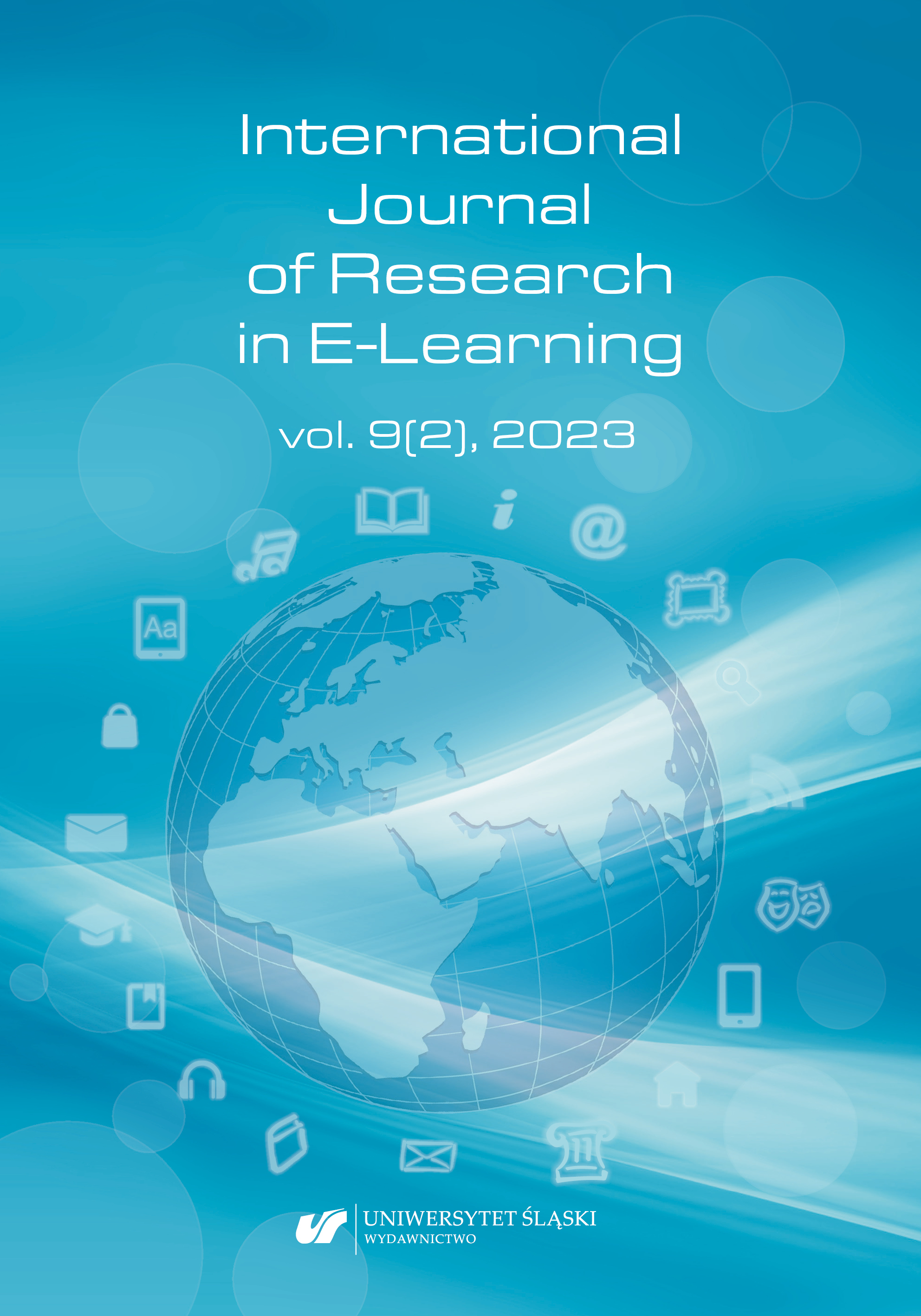Allen, D. D. & Toth-Cohen, S. (2019). Use of Case Studies to Promote Critical Thinking in Occupational Therapy Students. Journal of Occupational Therapy Education, 3(3). https://doi.org/10.26681/jote.2019.030309.
Google Scholar
Grześkowiak, M., Chudzicka-Strugała, I., Zwoździak, B., Swora-Cwynar, E., Nijakowski, K., Jokiel, M., & Roszak, M. (2020). E-learning during the coronavirus pandemic – creating educational resources for teaching medical students. Studies in Logic, Grammar and Rhetoric, 64(1), 77−97. https://doi.org/10.2478/slgr-2020-0041.
Google Scholar
Hookham, G., Nesbitt, K., Cooper, J., & Rasiah, R. (2014). Developing a Virtual Tour of a Community Pharmacy for use in Education. IT in Industry, 2(1). https://doi.org/10.17762/itii.v2i1.10.
Google Scholar
Hwang, N. K., Shim, S. H., & Cheon, H. W. (2023). Digital learning designs in occupational therapy education: a scoping review. BMC Medical Education, 23(7). https://doi.org/10.1186/s12909-022-03955-x.
Google Scholar
Kanikowska, D., Roszak, M., & Bręborowicz, A. (2023). E-learning during the COVID-19 pandemic. Medical Education (Japan), 54, suppl., p. 222 (abstr. IP-A2), 55th Annual Meeting of the Japan Society for Medical Education. Nagasaki, Japan, Jul 28–29, 2023. p-ISSN: 0386-9644.
Google Scholar
Kirkova-Bogdanova, A., Taneva, D., Tsokova, Y., & Marchev, Y. (2017). E-learning in pre-graduate healthcare training – good practice across the world. KNOWLEDGE – International Journal, 19(4): 1569–1575.
Google Scholar
Leszczyński, P. K., Roszak, M., Binkowska, A., Świniarski, P., Wilk, A., Charuta, A., Zacharuk, T., & Kononowicz, A. A. (2020). E-learning practice at medical universities in Poland in the perspective of the SARS-CoV-2 pandemic. Studies in Logic, Grammar and Rhetoric, 64(1), 35−58. http://dx.doi.org/10.2478/slgr-2020-0039.
Google Scholar
McAlister, R. B. (2014). Use of Instructor-Produced YouTube® Videos to Supplement Manual Skills Training in Occupational Therapy Education. The American Journal of Occupational Therapy, 68(Supplement_2), S. 67–S72. https://doi.org/10.5014/ajot.2014.685S04.
Google Scholar
Nagata, M., Chino, H., Yasuhara, T., & Noma, H. (2022). Disaster medical education for pharmacy students using video recordings of practical disaster drills. Currents in pharmacy teaching & learning, 14(5): 582−590. https://doi.org/10.1016/j.cptl.2022.04.002.
Google Scholar
Olivier, B., Verdonck, M., & Caseleijn, D. (2020). Digital technologies in undergraduate and post-graduate education in occupational therapy and physiotherapy: a scoping review. JBI Evidence Synthesis 18(5): 863−892. https://doi.org/10.11124/JBISRIR-D-19-00210.
Google Scholar
Roszak, M. (2019). Ocena przydatności e-learningu w kształceniu medycznym z zakresu patofizjologii. Wydawnictwo Naukowe Uniwersytetu Medycznego im. Karola Marcinkowskiego w Poznaniu. p-ISBN: 978-83-7597-376-1.
Google Scholar
Roszak, M., Leszczyński, P. K., Starosta, K., Wiktorzak, P., Torres, K., Świniarski, P., & Kononowicz, A. A. (2020). E-learning w kształceniu medycznym. Panorama e-edukacji w Polsce. Warszawa, Oficyna Wydawnicza Politechniki Warszawskiej, 73–89. ISBN: 978-83-8156-145-7.
Google Scholar
Roszak, M., Mokwa-Tarnowska, I., & Markowska, J. (2023). E-learning practice and future education at universities in Poland. International Conference (hybrid mode) on “Current developments in mathematical sciences and e-learning”. Ratlam, India, 16 January 2023.
Google Scholar
Roszak, M., Sawik, B., Stańdo, J., & Baum, E. (2021). E-Learning as a factor optimizing the amount of work time devoted to preparing an exam for medical program students during the COVID-19 epidemic situation. Healthcare, 9(9), 1147. https://doi.org/10.3390/healthcare9091147.
Google Scholar
Rowan, N. J., Kremer, T., & McDonnell, G. A. (2023). Review of Spaulding’s classification system for effective cleaning, disinfection and sterilization of reusable medical devices: Viewed through a modern-day lens that will inform and enable future sustainability. Science of The Total Environment, 878: 162976. https://doi.org/10.1016/j.scitotenv.2023.162976.
Google Scholar
Roy, H. (2017). The role of e-learning in medical education. Academic Medicine, 92(4): 430. https://doi.org/10.1097/ACM.0000000000001596.
Google Scholar
Silva, R.d.O.S., de Araújo, D.C.S.A., & dos Santos Menezes, P. W. (2022). Digital pharmacists: the new wave in pharmacy practice and education. International Journal of Clinical Pharmacy, 44(3): 775−780. https://doi.org/10.1007/s11096-021-01365-5.
Google Scholar
Smelkowska, A., Karbownik, A., Szczeszek, K., Zaorska, K., Siwiec, S., Purandare, B., Jokiel, M., Keczmer, P., Jankowski, M., Sienicki, K. & Roszak, M. (2023). Interaktywne i multimedialne materiały dla branży medycznej jako propozycja ogólnopolskiego standardu kształcenia w środowisku zdalnym. IX Konferencja „e-Technologie w Kształceniu Inżynierów”. Kraków, 19−20 września 2023. Centrum e-Learningu i Innowacyjnej Dydaktyki AGH, 2023: 33. p-ISBN: 978-83-963036-3-9.
Google Scholar
Smith, S. J., Farra, S., Ulrich, D., Hodgson, E., Nicely, S., & William, M. (2016). Learning and retention using virtual reality in a decontamination simulation. Nursing Education Perspectives, 37(4): 210–214. https://doi.org/10.1097/01.NEP.0000000000000035.
Google Scholar
Szczeszek, K., Smelkowska, A., Karbownik, A. & Roszak, M. (2023). Game based learning. The big book of online education for academics and other teaching proffesionals. Eds: Alina Guzik, Iwona Mokwa-Tarnowska, Marek Chodnicki. Gdańsk University of Technology: 104−113.
Google Scholar
Tabakova, V. (2020). E-learning – from first experiences in medical physics and engineering to its role in times of crisis. Health and Technology, 10: 1385−1390. https://doi.org/10.1007/s125543-020-00474-x.
Google Scholar
Unge, J., Lundh, P., Gummesson, C., & Amnér, G. (2018). Learning spaces for health sciences – what is the role of e-learning in physiotherapy and occupational therapy education? A literature review. Physical Therapy Reviews, 23:1, 50−60. https://doi.org/10.1080/10833196.2018.1447423.
Google Scholar
Wong, K. L. & Chan Mei Ling, D. (2016). Using online and scenario-based learning to improve nurse-patient interaction and enhance patient experience. World Hospitals and Health Services, 2016; 52(2): 31−37.
Google Scholar
Yilmaz, D. U., Palandoken, E. A., Ceylan, B., & Akbyik, A. (2020). The effectiveness of scenario-based learning to develop patient safety behavior in first year nursing students. International Journal of Nursing Education Scholarship, 17(1). https://doi.org/10.1515/ijnes-2020-0011.
Google Scholar


 https://doi.org/10.31261/IJREL.2023.9.2.08
https://doi.org/10.31261/IJREL.2023.9.2.08
